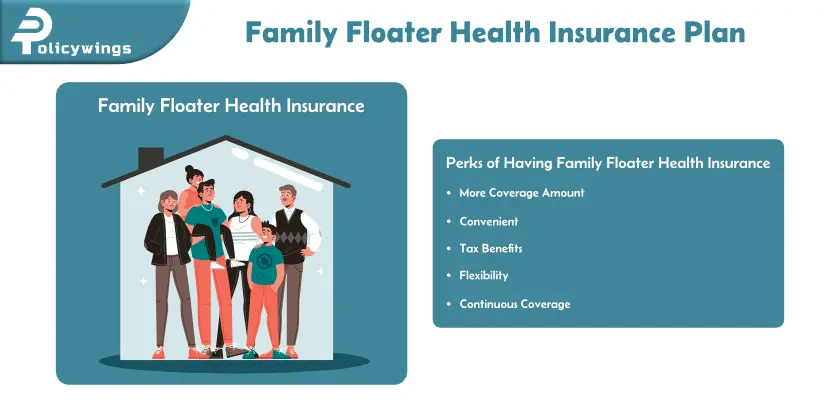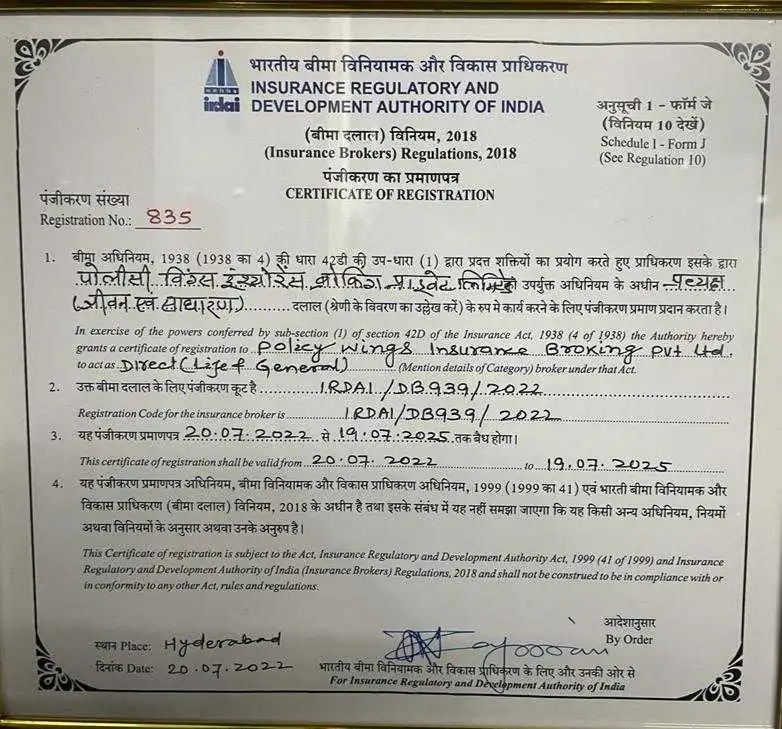Room Rent Capping
Easy Navigation
Capping on Room Rent Under Health Insurance Policy
When a patient undergoes treatment in a hospital, the impending bill is an inevitable part of the process. This document meticulously itemises the services and care they received during their stay. Among the myriad of line items, one element holds immense importance in the realm of health insurance claims – room rent. For individuals covered by health insurance, comprehending the intricacies of how room rent factors into the claims procedure can be bewildering. In this article, we aim to unravel the enigma surrounding room rent capping and explore its far-reaching effects on your hospital bill.
Health insurance policies often come laden with a variety of terms and conditions, including room rent capping. A grasp of room rent capping is imperative for policyholders, as it wields considerable influence over both the extent of coverage and the overall cost of healthcare expenses. In this extensive guide, we embark on a journey to dissect the concept of room rent capping, assess its ramifications within the realm of health insurance, and provide insights into potential solutions.
What is Room Rent Capping?
Room rent capping is a feature commonly found in health insurance policies. It refers to a limit set by the insurance provider on the amount they will pay for the hospital room rent during a policyholder’s hospitalisation. This cap can vary depending on the policy and insurer. Let us understand Room Rent Cap in the context of Health Insurance
Capping, often referred to as a “cap,” essentially signifies a limit. When we talk about room rent capping within the realm of health insurance, it denotes the maximum amount up to which your insurance provider will cover your room expenses during a hospital stay. Should you opt for a room that exceeds this predefined cap, you would be responsible for covering the additional costs at the time of claim settlement.
In your health insurance policy documentation, the insurance company explicitly outlines the room rent cap for your reference. This cap can take various forms: it may be a fixed monetary amount, such as Rs. 20,000, or as a percentage, e.g., 4% of the total sum insured, or even a daily limit for each day spent in the hospital.
For instance, let’s consider three hypothetical scenarios:
1. Mr. A has an Individual Health insurance plan with a limit on room rent set at Rs. 20,000.
2. Mr. B opted for an insurance policy with a limit on room rent equivalent to 4% of his sum insured, which happens to be Rs. 5 lakhs. Consequently, the room rent cap for Mr. B’s policy is also Rs. 20,000.
3. Mr. C holds an Individual Health insurance policy specifying a room rent cap of Rs. 2,000 per day during his hospital stay.
These diverse room rent capping mechanisms underscore the importance of thoroughly understanding your policy’s terms and conditions. It also emphasises the significance of selecting a policy that aligns with your healthcare needs and financial considerations, ensuring a seamless and worry-free healthcare experience.
The Average Cost of Hospital Room Rent in India
To appreciate the significance of room rent capping, it’s essential to have an idea of the average cost of hospital room rent in India. This cost varies greatly depending on the city, hospital type, and room category. Generally, private room charges can range from a few thousand rupees to several lakhs per day. The following table illustrates a breakdown of the different types of hospital rooms and their associated costs across various zones:
| Type of Hospital Room | Zone A | Zone B | Zone C |
| General Ward | ₹1,432 | ₹1,235 | ₹780 |
| Semi-private Ward (2 or more sharing) | ₹4,071 | ₹3,097 | ₹1,530 |
| Private Ward | ₹5,206 | ₹4,879 | ₹2,344 |
| ICU | ₹8,884 | ₹8,442 | ₹6,884 |
Please Note: These prices are provided for reference purposes and may vary from hospital to hospital and city to city.
Health Insurance without Room Rent Capping
In health insurance, the absence of room rent capping signifies the freedom to select any hospital room of your choice for your treatment, with no maximum limit imposed on room rent. With no room rent capping in place, you have the flexibility to opt for the hospital room that best suits your needs, including ICU rooms if necessary, as long as the total claim amount does not exceed your sum insured.
To illustrate this concept more clearly, let’s delve into some context:
When you are admitted to a hospital for treatment, you typically encounter a variety of room options available for selection upon admission. Most health insurers establish a limit up to which you can choose your hospital room, including ICU accommodations.
For example, hospitals often offer various room types such as double rooms, deluxe rooms, and luxury rooms, each with its own distinct room rent. This system is akin to how hotel rooms operate. Many health insurance policies incorporate room rent capping, which extends to ICU room rents as well.
However the absence of room rent capping can impact your hospital bill as in this scenario, you have the liberty to choose the hospital room that best suits your comfort and preferences without being constrained by predetermined limits on room rent. This freedom can significantly influence your overall hospital bill, offering you greater flexibility and a more tailored healthcare experience.
Benefits of Having No Room Rent Capping in Your Policy
1. Freedom to Choose Any Hospital Room: The foremost benefit of having no room rent capping in your health insurance is the freedom to select the hospital room that suits your preferences. Every individual has distinct preferences, and the ability to choose the room that makes you most comfortable can significantly enhance your hospital experience. Whether you’re content with sharing a room with two other patients or desire a private room all to yourself, the choice is entirely yours.
2. Flexibility in Utilising Your Health Insurance: With no room rent cap restrictions, you have the flexibility to utilise your health insurance as you see fit. Whether you opt for a basic room or indulge in a deluxe room, your claim is determined based on the total cost of your treatment and hospitalisation expenses combined. The absence of a room rent cap empowers you to allocate your expenses according to your preferences while ensuring that your total claim amount remains within the limits of your sum insured.
3. Enhanced Comfort during Your Hospital Stay: When you’re unwell or undergoing treatment, comfort becomes a paramount concern. Having no room rent cap allows you to choose the room that aligns best with your personal comfort preferences, thereby ensuring a more comfortable and pleasant stay during your hospitalisation. Your well-being and comfort are prioritised, enhancing your overall experience in the hospital.
4. Enhanced Coverage for Optimal Comfort and Medical Needs: One of the paramount advantages of having no room rent capping in your health insurance policy is the extended coverage it offers. With this flexibility, you gain the liberty to choose a hospital room that aligns precisely with your comfort preferences and medical requirements. Unlike capped policies that limit your room choices, the absence of capping ensures that your hospital stay can be tailored to your specific needs. Whether you prefer the tranquillity of a private room or are comfortable sharing with others, the choice remains entirely in your hands. This enhanced coverage empowers you to make the most appropriate decisions for your well-being without any concerns about exceeding predefined limits.
5. Unwavering Financial Security: No room rent capping provides a robust shield of financial security during times of illness or medical treatment. Under capped policies, individuals often face the unexpected burden of out-of-pocket expenses resulting from room rent charges that exceed the prescribed limits. In contrast, policies without room rent capping eliminate this concern entirely. Your financial stability remains intact, as you won’t encounter any surprise expenses related to room rent. This assurance allows you to concentrate solely on your recovery and well-being, without the added worry of unexpected financial burdens.
6. Peace of Mind and Focused Recovery: The absence of room rent capping contributes significantly to peace of mind during your healthcare journey. It allows you to shift your focus entirely toward your recovery and medical treatment, rather than expending mental energy on room rent limits and potential financial constraints. This peace of mind can prove invaluable in aiding your recuperation process, as it minimises stress and distractions related to healthcare expenses. With no room rent capping in place, you can confidently prioritise your health and well-being, knowing that your insurance coverage has you fully protected, and you can receive the best care tailored to your needs.
What are the various types of limits on Room Rents in different health insurance plans?
Health insurance policies can vary significantly in their approach to room rent along with their capping, and it’s essential for policyholders to comprehend these variations to make informed choices. Fortunately, all health insurance companies explicitly outline their room rent rules in the policy bond or the document. Thus, as a policyholder, your ability to opt a health insurance plan that aligns with your preferences regarding room rent is crucial. Here are the most popular types of limits on room rent and the options to consider:
1. No cap on room rent:
Multiple health insurance plans grant policyholders the freedom to choose a room type without imposing any limit on room rent. This means you can select the room that best suits your requirements as well as comfort without worrying about exceeding a daily limit.
2. Co-pay option on room rent:
Now, co-payment involves sharing the total payment that is actually made to the hospital for treatment. When your policy includes co-payment on room rent, you, as the policyholder, will be responsible for bearing both the room rent along with the related expenses along with the insurance company. This can impact the out-of-pocket costs you incur during your hospitalisation.
3. Actual Cap on Room Rent:
Insurance companies frequently place a cap on the maximum amount of the total room rent that a policyholder can actually claim. Any room expenses exceeding this predetermined limit will not be covered by the insurance company. It is crucial to choose a room that falls within the specified limit to avoid additional expenses.
4. Specific cap on room rent:
Some health insurance policies provide policyholders with the flexibility to select a type of hospital room based on availability and personal preference. If your policy imposes a cap on a specific room type, you have two choices. You can opt for a room type that falls within the room rent limit, or you can choose a room that exceeds the limit and be prepared to cover the additional expenses yourself.
5. Waiver on Room Rent capping:
The Room Rent Waiver add-on can be purchased in conjunction with an insurance policy that includes room rent capping. This add-on effectively waives the room rent limit, providing policyholders with greater flexibility in choosing their preferred room type without financial constraints.
Understanding these room rent capping options empowers policyholders to make well-informed decisions tailored to their healthcare needs and financial considerations. By selecting the most suitable room rent arrangement, policyholders can ensure a more seamless and cost-effective healthcare experience.
How does a room rent cap affect the total claim payable in a health insurance plan?
When calculating the total claim amount, the insurer gives paramount consideration to the room rent and its associated capping. The actual claim amount can significantly increase or even decrease based on whether you choose a room that falls within or exceeds the limit of room rent. To illustrate this, let’s delve into an example scenario:
Example Scenario:
Imagine Mr. Smith has purchased a health insurance policy with coverage of Rs. 7 lakhs, featuring a room rent cap set at 2% of the sum insured. After several years of holding the policy, he finds himself requiring hospitalisation for a critical medical procedure – Cardiac Bypass Surgery. His expected hospital stay duration is 7 days, and he now faces the decision of selecting a hospital room.
While his insurance policy permits a room with a daily cost of Rs. 6,000, Mr. Smith opts for a more comfortable room priced at Rs. 9,000 per day. He quickly calculates that the insurer will cover Rs. 14,000 per day, leaving him responsible for the difference of about Rs. 3,000 per day for the 7-day duration.
| Claim Amount Calculations | Amount |
|---|---|
| Room rent allowed | Rs. 12,000 |
| Cost of Cardiac Bypass Surgery (48%) | Rs. 1,20,000 |
| Doctor Visits (48%) | Rs. 16,800 |
| Tests (48%) | Rs. 19,200 |
| Medicines (not subject to deductions) | Rs. 28,000 |
| Claim amount | Rs. 1,96,000 |
| Mr. Smith’s Hospital Bill | Amount |
|---|---|
| Room Rent Cost | Rs. 63,000 |
| Cost of the treatment/ surgery | Rs. 2,50,000 |
| Cost for all Doctor Visitation | Rs. 35,000 |
| Diagnostic Tests | Rs. 40,000 |
| Medicines | Rs. 28,000 |
| Total | Rs. 4,16,000 |
However, the true understanding of room rent operates precisely different and not as Mr. Smith initially calculated. It functions of the room rent is based on ‘the principle of proportionate deductions’ which is calculated as the % of the room rent that is allowed against the actual room rent.
Proportionate Deductions is calculated as the percentage of (Room Rent Allowed / the Actual Room Rent)
The insurance company will adjust Mr. Smith’s claim amount as per the following calculations:
(Note: Medicines, which are sold at MRP, do not undergo deductions. However, depending on the selection of room, other charges, such as doctor visits, may vary. Hence, the differential pricing structure incurs proportionate deductions.)
Given that the percentage difference between the limit on room rent and the room rent on actuals is 48%, Mr. Smith’s overall bill will be impacted by a corresponding 48% for items applicable. Consequently, he is liable for approximately Rs. 2,20,000 from his own pocket, not including deductions and charges.
This example underscores the importance of comprehending how room rent capping functions within your health insurance policy, as it can have a substantial impact on your healthcare expenses during a hospital stay. Making an informed decision regarding your room selection can help mitigate potential out-of-pocket costs.
What is the alternative solution to a cap on room rent?
When it comes to considering your health insurance plan, depending on your circumstances, there are different solutions to address room rent capping:
Scenario 1: You have an existing plan with a room rent cap:
under this situation, you have a couple of options. Firstly, you can contemplate altering your current health insurance plan by switching to one that does not include room rent capping. it can be achieved through a process known as porting, where you transfer your existing plan to a new one that aligns better with your preferences. Alternatively, if you wish to retain your current plan, consider increasing the SA offered by your health insurance provider. By doing such adjustment raises the room rent capping limit, affording you the flexibility to opt a room that suits your preferences without significantly impacting the claim amount.
Scenario 2: You Are in Search of a New Health Insurance Policy:
If you find yourself in the process of seeking a new health insurance policy, it’s essential to diligently review all related documents to gain clarity regarding capping of room rent. In case you cannot locate this information within the provided documents, we strongly recommend reaching out to the insurance company directly for clarification. This proactive step ensures that you have a comprehensive understanding of whether your selected plan includes room rent capping and how it may impact your healthcare coverage.
Conclusion
Thus, understanding room rent capping and its implications is essential when selecting a health insurance policy. It ensures that you are adequately prepared for potential healthcare expenses and can make informed decisions about your coverage.
Frequently Asked Questions
In health insurance The room rent limit refers to the maximum daily charge of a hospital room that the insurance provider will cover under your policy. This limit is typically expressed as a percentage of the sum insured, such as 1 percent or 2 percent per day. It's essential to verify the specific room rent limit with your insurance provider, as it may vary depending on your policy.
no cap on room rent health insurance policies are insurance plans that do not impose any restrictions on the cost of the hospital room. Policyholders have the freedom to select a room based on their preferences, and the insurance company will cover the associated costs in accordance with the terms and conditions of the insurance policy. This flexibility allows individuals to choose a hospital room that suits their comfort and medical needs without being limited by room rent constraints.
Room Rent Waiver serves as an add-on feature that policyholders can opt for in conjunction with their health insurance policy. This add-on effectively eliminates the restrictions imposed by room rent caps. Consequently, policyholders gain the freedom to opt for a hospital room based on their comfort and preferences, without being constrained by predetermined limits. By removing the capping on room rent, Room Rent Waiver helps ensure that policyholders receive the most suitable healthcare accommodations without compromising their insurance coverage, ultimately reducing the impact of capping on the claim amount.
Leading Health Insurance Companies




























